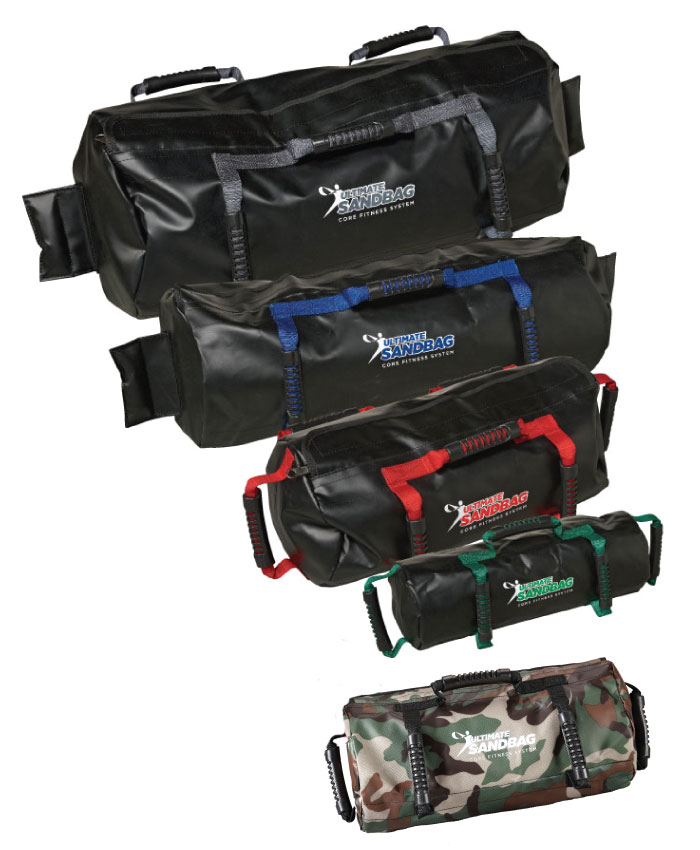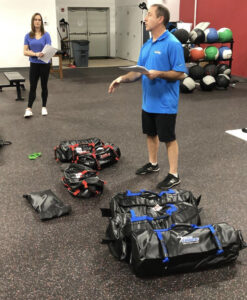
Sandbag Training for Baseball Players
Today’s guest post comes from Seattle-based physical therapist Dan Swinscoe. He’s been a great resource (and friend) to me over the years, and this post will show you yet another reason why that’s the case.
When I found out Dan was writing up this article, I asked the good folks at Ultimate Sandbag Training if they’d be up for doing a sale for my readers – and they kindly obliged. From now through next Sunday at midnight, you can get 10% off on both sandbag products and their educational resources. Just head HERE and enter the coupon code cressey10.
Enjoy! – EC
Power: it’s one of the most highly coveted qualities in all of athletics. Be powerful and you can be dominant. In baseball, it’s fastball velocity for pitchers or exit velocity and HRs for the hitters. The powerful guys are the most feared and usually the highest paid.
How do you get powerful? First, you have to be strong. Strength is a prerequisite to power. You can be strong without being powerful, but cannot be powerful without being strong. So, if we’re talking rotational strength we need to strengthen our ability to move or resist movement in a rotational manner. But what tool do you use for developing these qualities? Dumbbells, kettlebells, barbells, body weight and cables/bands are all viable options. However, a lesser known option that is often superior to the others is what I want to talk about today. It’s The Ultimate Sandbag (USB).
Keep in mind the actual weight of the sandbags you’ll see in these exercises is relatively low when compared to using iron. However, the WORK you have to do to move and control them is sky high. Even when working with college and pro guys, I haven’t needed more than a 60-pound bag to challenge them effectively. I’ve blended this tool in with all the others and I encourage you to do the same. Keep reading and you’ll appreciate why that’s the case.
Here are three of my favorite ways to use the USB for rotational strength. In all three videos, the athlete would be cued to “crush” the handles to irradiate tension higher in the chain (see Sherrington’s law) and to try and “tear the bag.” By trying to tear the handles apart you create tension in the lats, thus better connecting them into the glutes. (see serape effect)
Chop and Lift: The chop and lift patterns have been around for decades. Coming from the rehab world, it’s a movement where you diagonally pull down or lift up. This movement pattern takes advantage of the natural anatomic alignment of our tissues referred to as the serape effect.
In the first video, we begin on the ground in a single leg bridge position, challenging rotational strength by preventing the rotation that gravity is trying to impart. It is especially difficult when chopping down towards the unsupported side. Notice both elbows stay straight the whole time. Once the elbows bend, you lose the lat and start using triceps. We want the lat connection.
It can also be advanced to an upright posture. The next video advances the exercise into ½ kneeling and a static split stance referred to as “hover.” This can be modified further by the width of the stance. Need more challenge? Stand on a line. Remember to breathe.
MAX Lunge: The name refers to using multiple axes. It used to be called a rotational lunge. You can see why. The challenge from this drill is that the player has to lunge and maintain posture and lower extremity alignment in all three planes despite the momentum of the bag trying to knock him over. I also love the strong eccentric nature of this exercise. The biggest challenge is to decelerate with control. This mimics the challenge a pitcher has coming down the mound; an unstable front leg is bad news for a pitcher. This is an outstanding way to train that need for front leg stability with additional challenge to the core more proximally. The first example uses the “suitcase” handle, while the second one uses the standard “clean” handles. Finally, the third example increases the challenge by elevating the center of gravity using a “front load” position of the USB. When in front loaded position, the “tear the bag apart” cue is executed with the forearms. They all feel different.
Hinging with Rotation: Deadlifts and good mornings are staples in many strength training programs, and rightfully so: the hinge is a motion that must be trained. But in sports and life, we typically move one leg at a time and in all three planes of motion. It’s tough to do that with a barbell. To me, the USB is the best way to make single leg rotational hinges feel challenging in a way that is also safe for the athlete. Athletes need to be able to train hard without feeling like they’re doing a circus trick.
In the rotational deadlift example below, the player should crush the handles and think of tearing the bag apart before even moving. He crosses the back leg behind the front leg to feel tension in the lateral hip rotators, then becomes stable before moving. The next move is performed by pushing forcefully into the ground and mimicking a step. He’ll then reset the start position and repeat. No one has to ask what muscles are being used; you feel it right away. But, more importantly, you are doing it in a way that you can expect to carryover to the field of play.
The second example is a good morning. It’s the same single-leg rotational hinge movement, but with the USB in a front load position. The movement is the same, but the challenge is different because of the elevated position of the USB. Again, tearing the bag apart is performed with forearms.
Now that we’ve got some ways to get rotational strength, let’s layer on the rotational power. Power refers to your ability to rapidly express the strength that you have. In baseball, medicine ball work is probably the most popular training stimulus to develop rotational power, and it’s awesome (and Eric’s YouTube and Instagram pages have plenty of options to review on this front). In my opinion, the USB is right there with it as a great tool to create this sport-specific skill.
Below are some of my favorite rotational power drills for baseball players.
Clean from Half-Kneeling: It emphasizes the concentric portion of lower body power transferring the load from the side of the body to the middle. As you can see, it can be progressed to single leg for additional stability challenge. The beginning position of the bag with the cue to tear it apart provides a strong connection between the glute of one side and the lat of the other…just like with running, hitting and throwing.
Inside-Out Clean: the bag starts “inside” the base of support and centered on the body; the athlete then creates rotational power so the catch happens on the side of the body. This skill – which is almost all concentric – is mastered before the “outside in” clean, where there is also a strong eccentric component. In other words, you work on creating power and then controlling power.
The MAX Lunge Static to Dynamic: I described the MAX lunge using a forward step earlier in our rotational strength section. However, if you step backward, speed it up, and try to ballistically drive your foot into the ground as the bag goes from side to side, you have an absolutely intense challenge to create and control power in all three planes. I think of this as having all the benefits of a kettlebell swing, but with less risk of injury and more carryover to baseball because it’s one leg at a time and incorporates all three planes of motion. The player who has apprehension towards the KB swing will appreciate this alternative. And, the more you do it, the more it will grow on you. The reps are low because the demand is high, so I usually have players do 3-5 per side. If the reps go up, the effort goes down, which means we aren’t training power effectively.
These are a few of the many ways you can utilize The Ultimate Sandbag in your training for strength and power. It’s been a lot of fun for me to learn about them and use them with my clients/patients and in my own training. I hope you enjoy learning how to use them, too; the results will speak for themselves.
Note from EC: Don’t forget about the great discount in place on sandbags and the associated educational resources at Ultimate Sandbag Training through next Sunday at midnight. You can get 10% off by heading HERE and enter the coupon code cressey10.
About the Author
Dan Swinscoe, MPT, CSCS is a physical therapist in Issaquah, WA. He owns Peak Sports and Spine Physical Therapy and teaches his own class, Kettlebells for Clinicians. You can follow him on YouTube, Facebook and Instagram (@danswinscoe) or email him at baseballrehab@gmail.com.




